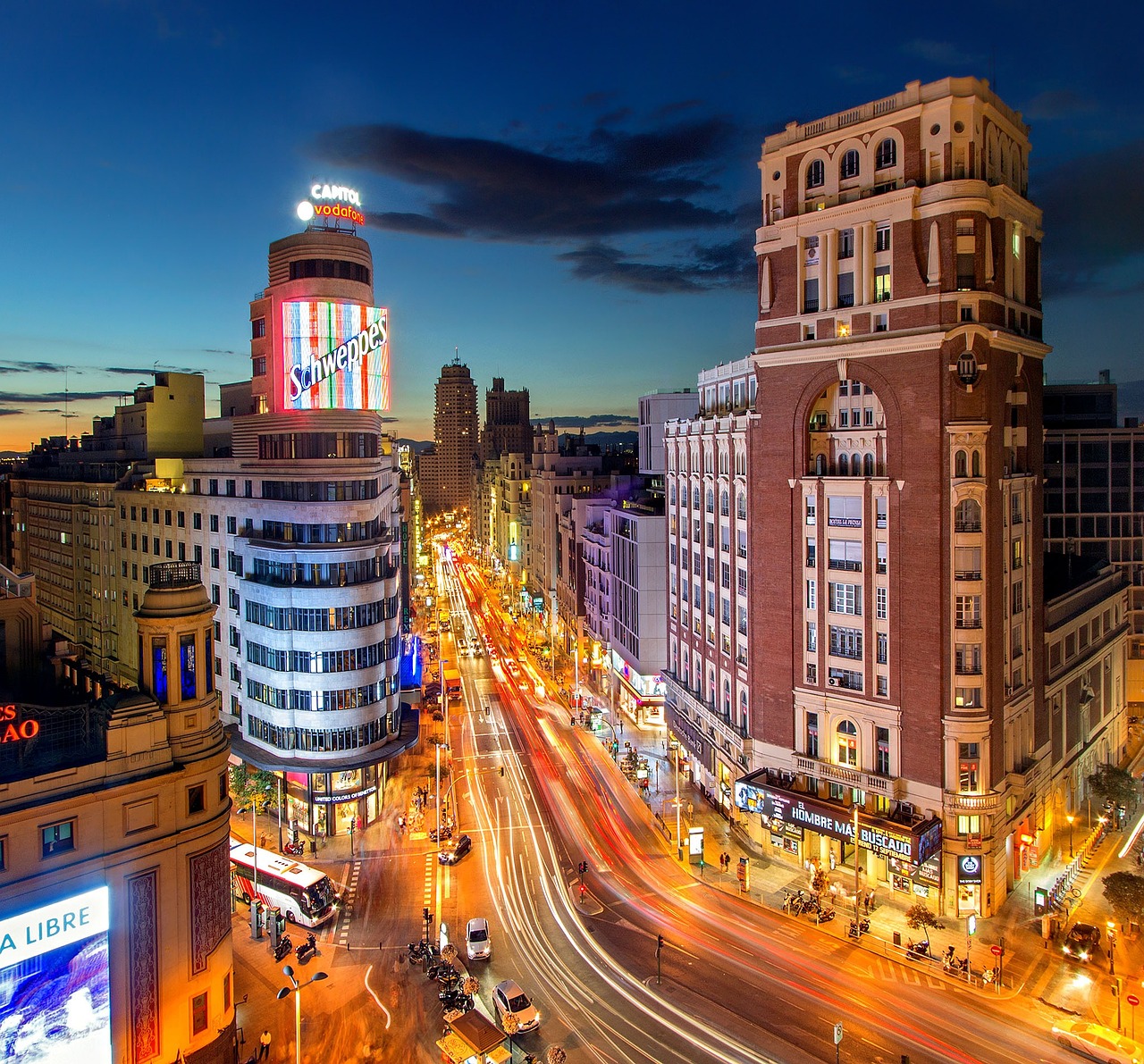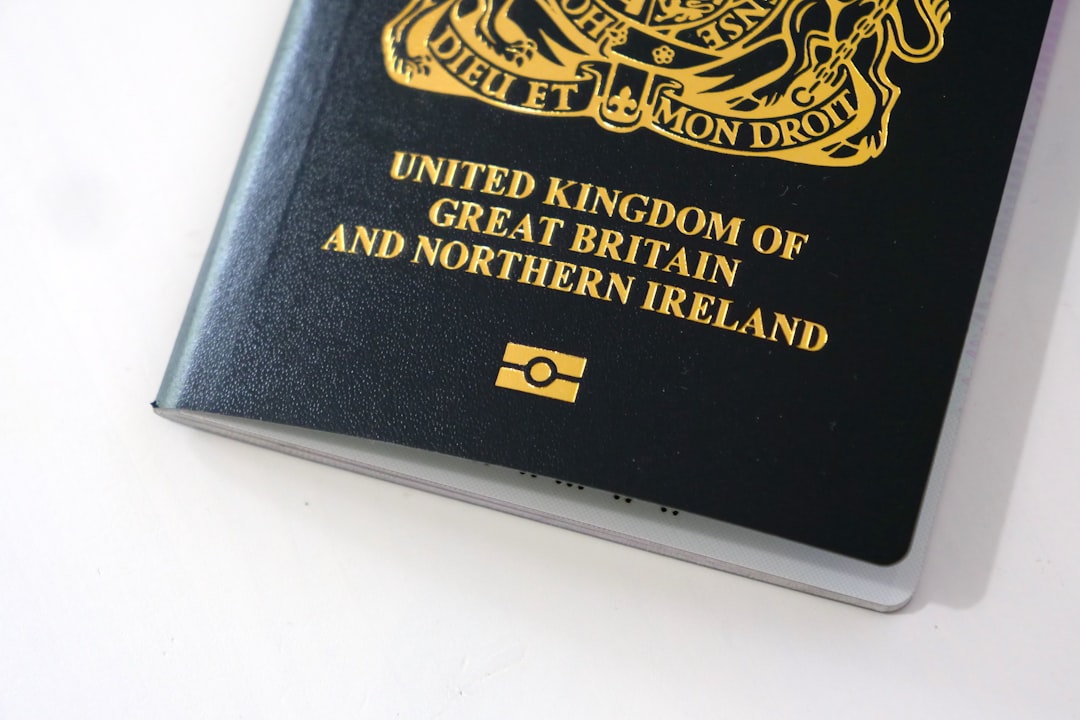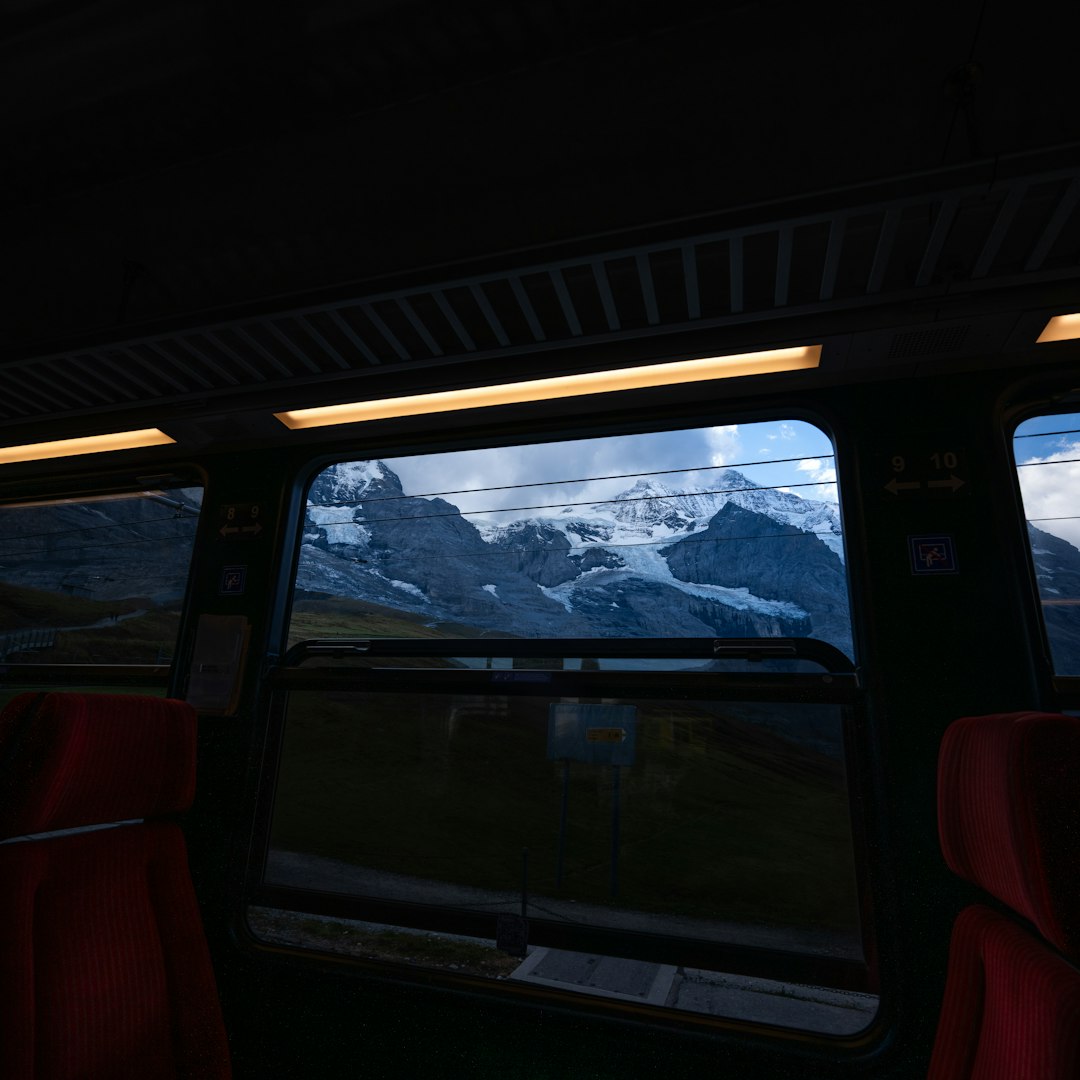Madrid, the vibrant capital of Spain, is a city that captivates visitors with its rich history, stunning architecture, and lively culture. From the majestic Royal Palace to the bustling Puerta del Sol, Madrid exudes an air of elegance and charm. Its tree-lined boulevards, world-class museums, and tantalizing tapas bars paint a picture of a city full of life and joy. The golden triangle of art museums – the Prado, Reina Sofia, and Thyssen-Bornemisza – houses some of the world’s most renowned masterpieces, drawing art enthusiasts from across the globe.
By day, the city pulses with energy. The historic Plaza Mayor, once the scene of bullfights and public executions, now teems with tourists and locals alike, enjoying the sun-drenched terraces of its cafes. The nearby Mercado de San Miguel offers a gastronomic paradise, its stalls brimming with fresh produce, artisanal cheeses, and mouth-watering tapas. In the evening, the streets of neighborhoods like La Latina and Chueca come alive with the sounds of laughter and clinking glasses as Madrileños indulge in their beloved pastime of socializing over drinks and tapas.
But as the sun sets and shadows lengthen across the city’s cobblestone streets, a different Madrid emerges – one steeped in mystery, intrigue, and dark history. Behind the facade of grandeur and gaiety lies a city with secrets, a place where heinous crimes have left their mark on the collective memory of its inhabitants. This is the Madrid of whispered legends and unsolved mysteries, a city where the echoes of past atrocities still resonate through time.
The Cursed House of Malasaña
Our journey into Madrid’s criminal underworld begins at 3 Calle Antonio Grilo, in the heart of the trendy Malasaña neighborhood. This unassuming building, known as “La Casa Maldita” (The Cursed House), has been the site of numerous horrific crimes over the decades, earning it a reputation as one of the most sinister locations in the city.
The building’s dark history began in 1915 when a man was brutally slashed to death in front of its entrance. But it was in the 1960s that the house truly earned its sinister reputation. On May 1, 1962, the most macabre event in the building’s history unfolded. José María Ruiz Martínez, a 48-year-old tailor, murdered his wife and five young children before taking his own life. The city was left reeling from the savagery of the crime, unable to comprehend the depths of despair that could drive a man to such a horrific act.
Just two years later, in April 1964, another tragedy struck. Pilar Agustín Jimeno, a young unmarried woman living on the first floor, smothered her newborn child “to hide her dishonor”. In a society still deeply conservative, the pressures of maintaining appearances led to an act of infanticide that shocked the community.
These chilling events have cemented the building’s place in Madrid’s dark lore, with many locals believing the structure to be cursed or haunted. Some claim to hear the cries of children echoing through the halls at night, while others speak of a oppressive atmosphere that seems to linger within its walls.
The Andalusian Express Massacre
From the narrow streets of Malasaña, we move to Madrid’s bustling railway stations, where one of Spain’s most notorious crimes took place. In 1924, a group of robbers attacked the mail train traveling from Madrid to Andalusia, brutally murdering the driver and ticket inspector. The crime, which became known as the “Crimen del Expreso de Andalucía,” sent shockwaves through Spanish society and remains one of the most infamous cases in the country’s criminal history.
What made this crime particularly intriguing was the marked bills that led to the culprits’ downfall. The mastermind behind the robbery, Antonio Teruel, committed suicide when cornered by police, while two of his accomplices, José María Sánchez Navarrete and Francisco de Dios Piqueras, were sentenced to death by garrote vil, a particularly gruesome method of execution involving strangulation with an iron collar.
The brutality of the crime and the subsequent manhunt captivated the public’s imagination, becoming the subject of numerous books and films over the years. It served as a stark reminder of the violent undercurrent that could surface even in a society striving for modernity and progress.
The Jarabo Murders
In the 1950s, Madrid was shaken by a series of brutal killings committed by José María Pablo de la Cruz Jarabo Párez-Morris, known simply as Jarabo. This man, with a name as long as his list of atrocities, murdered four people, including a pregnant woman, in a crime spree that horrified the nation.
Jarabo’s crime spree took him across Madrid, from pawn shops to private residences. His victims included a married couple who owned a pawn shop, their maid, and another pawn shop owner. The brutality of the murders, committed with a variety of weapons including a flat iron and a gun, sent shockwaves through the city.
The case gained notoriety not just for its brutality, but also for the profile of the killer. Jarabo was from a wealthy family and had studied in England, defying the stereotype of the typical criminal. His actions raised uncomfortable questions about the nature of evil and whether it could lurk behind even the most respectable facades.
Jarabo was eventually captured and executed by garrote vil in 1959, but the memory of his crimes lingered in the collective consciousness of Madrid for decades to come.
The Gardner-López del Moral Case
Our next stop takes us to Calle Sainz de Baranda, where in January 1988, another gruesome crime unfolded. The wealthy Gardner-López del Moral couple and their maid, Benita, were found brutally stabbed to death in their apartment.
The perpetrators were eventually identified as Mari Ángeles, Benita’s niece, and her boyfriend, Francisco “Paco El Orejas” García Escalero. What began as a desperate attempt to obtain money for drugs ended in a bloodbath that horrified the nation.
This case highlighted the growing drug problem in Spain during the 1980s and the violent crime that often accompanied it. It served as a wake-up call for many Madrileños, shattering the illusion of safety that many in the more affluent neighborhoods had held onto.
The Unsolved Murder of Vicenta Verdier
As we delve deeper into Madrid’s criminal past, we find ourselves on Calle Tudescos, a street that in 1907 became the scene of one of the city’s most intriguing unsolved murders. Vicenta Verdier, a well-known figure in Madrid’s high society, was found brutally murdered in her home. The case captivated the public’s attention and became a sensation in the press.
Verdier, known for her beauty and charm, had many admirers and potential enemies. The investigation revealed a web of complex relationships and possible motives, but despite extensive efforts, the killer was never found. The case remained open for years, fueling speculation and conspiracy theories that persist to this day.
The murder of Vicenta Verdier became a part of Madrid’s folklore, a reminder of the city’s capacity for mystery and the limitations of justice. It stands as a testament to the enduring fascination with unsolved crimes and the dark allure they hold over the public imagination.
The Parricidal Horror on Calle San Hermenegildo
In 1883, Calle San Hermenegildo witnessed a crime that sent shockwaves through Madrid’s society. A notorious case of parricidio (the murder of a parent or close relative) unfolded within the walls of a seemingly respectable home. The details of the crime were so shocking that they challenged the very foundations of family values that the conservative society of the time held dear.
While the specifics of the case have been lost to time, the impact it had on the community was profound. It sparked debates about family dynamics, mental health, and the pressures of societal expectations. The street itself became a symbol of the dark undercurrents that could run beneath the surface of even the most respectable families.
The case on Calle San Hermenegildo served as a grim reminder that sometimes the greatest dangers lurk not in dark alleys or among strangers, but within the supposed safety of one’s own home.
The Violent Attack on Calle de los Libreros
Our journey through Madrid’s criminal history takes us next to Calle de los Libreros, formerly known as Calle de la Justa. In 1861, this street became the stage for a violent attack that not only shocked the public but also exposed the intricate connections between the criminal underworld and the upper echelons of Madrid’s society.
Carlota Pereira and her daughters were the victims of a brutal assault that left the city reeling. As the investigation unfolded, it became clear that this was no random act of violence. Political figures were implicated, and the case began to unravel a complex tapestry of corruption and criminal connections that reached into the highest levels of Madrid’s society.
The attack on Calle de los Libreros became a watershed moment, forcing the city to confront the reality that crime and power were often intertwined. It challenged the notion of a clear divide between the respectable world of politics and the shadowy realm of criminal activity.
The Eva Blanco Case: A Modern Mystery
As we move into more recent times, we encounter the tragic case of Eva Blanco, a crime that haunted Madrid for nearly two decades. On April 20, 1997, 16-year-old Eva Blanco Puig was brutally murdered in Algete, a small town on the outskirts of Madrid. Her body was found in a ditch, stabbed 19 times.
The murder shocked the community and sparked one of the longest and most complex investigations in Spanish criminal history. For years, the case remained unsolved, becoming Spain’s most infamous cold case. The investigation, codenamed “Operation Gang” by the Spanish Civil Guard, pursued numerous leads and theories, but the killer remained elusive.
The autopsy revealed a horrific sequence of events. Eva had been sexually assaulted before being stabbed multiple times with a navaja, a type of folding knife. The first stab wound, inflicted while she was in a vehicle, might have been fatal on its own. The subsequent wounds, many of them superficial, were described as “passionate,” suggesting a crime of intense emotion.
For years, the case captivated the nation. Theories abounded, ranging from local suspects to the possibility of a serial killer. The investigation looked into Eva’s personal life, her relationships, and even considered the possibility of a stranger attack, which was initially thought unlikely given the small, close-knit nature of Algete.
It wasn’t until 2015, 18 years after the murder, that a breakthrough finally came. DNA evidence led investigators to Ahmed Chelh Gerj, a Moroccan man who had lived in Algete at the time of the murder but had since returned to Morocco. Chelh was arrested in October 2015, but the case took another tragic turn when he committed suicide in his prison cell in January 2016, just before he was due to stand trial.
The Eva Blanco case serves as a stark reminder of the long shadow that unsolved crimes can cast over a community. It highlights the advances in forensic science that can bring closure to cold cases, but also the complexities and challenges of international criminal investigations.
Conclusion: The Dual Nature of Madrid
As our journey through Madrid’s dark history comes to an end, we find ourselves back in the bustling streets of the modern city. The contrast is stark – the same plazas and avenues that once witnessed horrific crimes now teem with life, laughter, and the vibrant culture that Madrid is famous for.
This duality is perhaps what makes Madrid so fascinating. It is a city of light and shadow, of joy and sorrow, of beauty and horror. The crimes we’ve explored are not just historical footnotes, but integral parts of the city’s identity, shaping its development and the psyche of its inhabitants.
From the cursed house in Malasaña to the unsolved mysteries of Calle Tudescos, from the political intrigues exposed on Calle de los Libreros to the modern tragedy of Eva Blanco, each case adds a layer to Madrid’s complex tapestry. They remind us that beneath the surface of even the most beautiful cities, there lurk darker stories waiting to be told.
Yet, it is precisely this rich and sometimes dark history that gives Madrid its depth and character. The city has not shied away from its past but has instead embraced it, turning many of these locations into points of interest for those fascinated by true crime and urban legends.
As visitors walk the streets of Madrid today, they may not be aware of the stories that linger in the shadows. But for those who know where to look, the echoes of these crimes can still be felt, adding an extra dimension to the experience of this magnificent city.
Madrid stands as a testament to human resilience, a place where tragedy and triumph coexist, where the darkest chapters of history serve not to define the city, but to enrich its narrative. It is a city that has faced its demons and emerged stronger, a place where the joy of life is perhaps all the sweeter for the knowledge of the darkness it has overcome.
As night falls and the city’s famous nightlife begins to stir, one can’t help but feel a sense of awe at the layers of history beneath one’s feet. For in Madrid, every street corner, every old building, every dimly lit alley has a story to tell – some glorious, some grim, but all uniquely Madrid.




